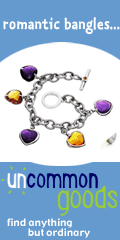|
All care
has been given to present these instructions in the original form.
KnitHeaven
is not responsible for errors.
POINT LACE INSTRUCTIONS.
The outlines of any design in Point Lace are made in braid of various
sorts, in thread, or sometimes in linen. The braid used is either
French linen or cotton braid, or that now known as Italian braid.
French braid is a simple plait, more or less wide; Italian braid is,
in fact, a pillow lace insertion, somewhat resembling a tape, but with
edges like those seen in all other pillow lace. It enters very much
into the composition of Venetian and other valuable Italian lace,
whence the name Italian braid has been given to it. Point lace used
formerly to be worked on parchment, this, however, being very hard and
stiff, is not so pleasant a material to work on as coloured paper,
which may be lined with calico or alpaca, according to the word*work
intended to be done.
French braid, whether made of linen or of cotton, is laid on the
pattern with stitches taken across it, from one edge to the other.
This mode of putting on braid prevents it from stretching, as, from
the nature of the plait, it would otherwise do. In forming angles,
each edge should be sewn down to the paper, and then the braid turned
over. Circles are made by laying the braid on the design, and forming
it into the proper shape with the fingers, before tacking it down.
We give a diagram showing the manner in which lines of braid cross and
intersect each other, to form the pattern; and we would observe, en
passant, that each line is done with a separate piece of braid, that
from A to B being one piece, and from C to D another.
Italian braid, being so much wider, requires to be tacked down at both
edges; and in forming circles and scrolls, one edge has, not
unfrequently, to be gathered in slightly. When thread is used as an
outline, a second, and much finer thread is used to tack it down. The
coarse thread is laid on the outlines, and the needle is brought up on
one side of it, and down, in the same hole, on the other. The stitches
are taken at the rate of five or six to an inch, one being always
placed at the point of each angle, so as to keep the outlines as
accurate as possible. To fasten on a thread, run the needle along the
braid a little way, taking a button-hole stitch to secure it. Fasten
off in the same manner. If the outlines are in thread, you can twist
the needle round it two or three times, and then take a tight
button-hole stitch.
POINT LACE Materials Needed.
The materials required for this elegant branch of needlework are
neither numerous nor expensive. TRACING CLOTH, LEATHER, or TOILE
CIRÉE, various BRAIDS and CORDS, LINEN THREAD and two or
three sizes of needles, scissors and thimble. TRACING CLOTH is
required when ladies copy point lace patterns, and is the most
convenient mode of taking them, as the design can be worked upon
the tracing cloth, which, though transparent, is very strong; the
price is 1s. 6d. per yard. Fine LEATHER is the material upon which
bought patterns are usually traced, and is decidedly more pleasant
to work on than is any other material. In selecting
patterns ladies should choose those traced upon green leather in
preference to scarlet or buff, as green is better for the eyesight
than any other colour.

TOILE CIRÉE is only a substitute for leather, and is not
as pleasant to work upon in warm weather.
The needles employed are usually Messrs. Walker's needles, Nos.
9 and 10. The scissors should be small, sharp, and pointed, as in
illustration No. 425. An ivory thimble may be safely employed in
this light work.
Please
do not post these instructions to another website. However, Please feel free
to post a link to this page:
http://www.knitheaven.com/vintagepatterns/laceinstructions.htm |







